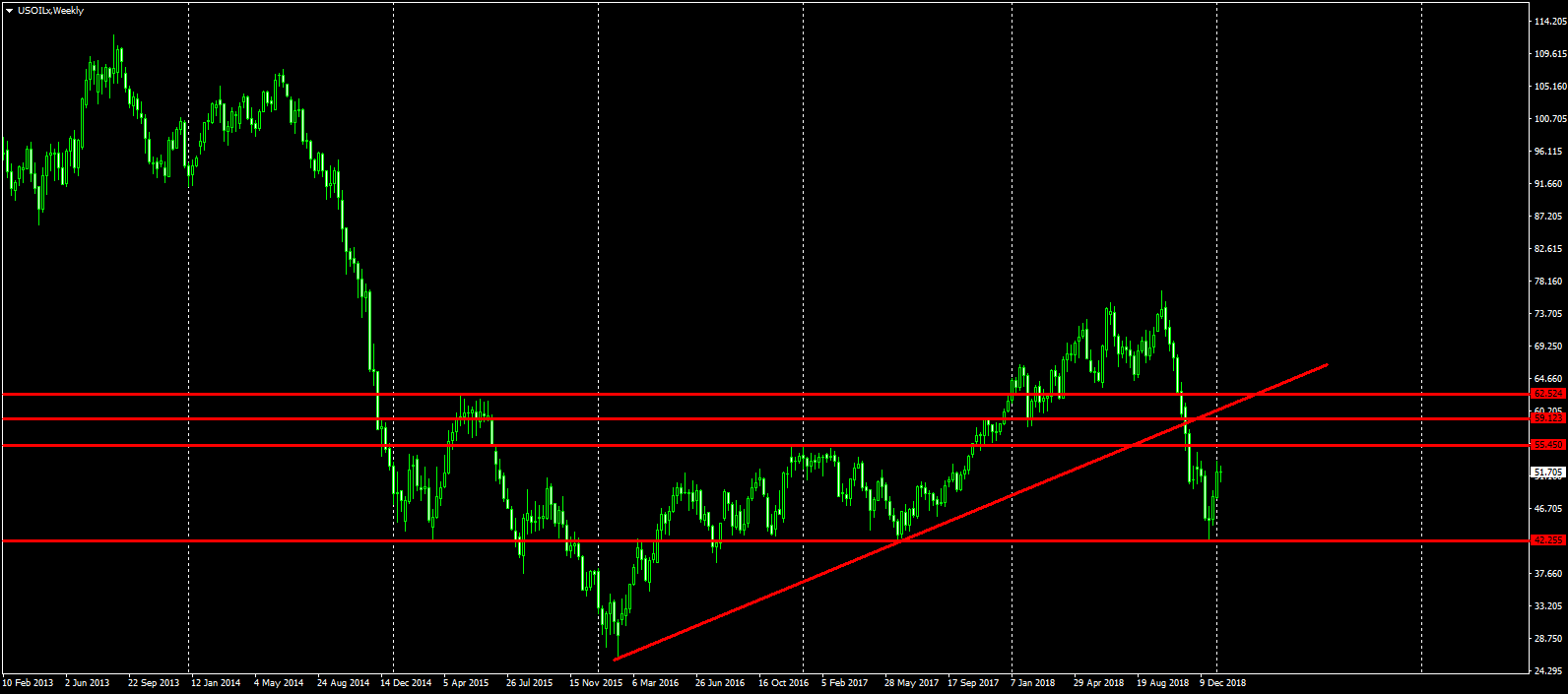Crude oil prices were able to recover initial losses this week as the latest data from the Energy Information Administration showed a larger than forecast draw in stockpiles.
The EIA data for the week ending January 11th, showed US crude inventories falling by 2.7 million barrels versus the expected drawdown of 1.3 million barrels. In Oklahoma, inventories at the Cushing delivery hub were down 743k barrels, while on the East Coast crude stocks hit their lowest levels since 2014.
Following the protracted period of excessive inventory builds last year, bulls strongly welcome news of such a drawdown. However, the report was not all positive as gasoline and distillate inventories were seen rising again.
Gasoline Inventories Exploding
The report showed gasoline stocks rising 7.5 million barrels over the week, versus an expected increase of 255.6 million barrels, marking the largest weekly increase since February 2017. On the Gulf Coast, gasoline stocks rose to 90.96 million barrels, marking fresh record highs for a third consecutive week.
Distillate stockpiles, including diesel and heating oil, were seen higher also. Over the week, stockpiles rose by 3 million barrels, almost double the forecast 1.6 million barrel increase.
US Production Hits New High
US crude production was also seen rising further last week by 200k barrels a day to average 11.9 million barrels per day for the week, marking a new record high.EIA: OPEC Cuts Won’t Be Enough To Boost Oil Prices
In its latest Short-Term Energy Outlook, the EIA said that it expects OPEC’s combined oil production to be roughly 1 million barrels per day lower, in line with OPEC’s arranged production cuts. However, the EIA feels that this still won’t be enough to cause higher prices given the trend among non-OPEC producers, specifically the US, which are seeing heavy increases in production.
The EIA forecasts oil production from non-OPEC producers to rise 2.4 million barrels per day this year which will more than offset the cuts in OPEC production, keeping oil prices weighted.
Some OPEC Members To Increase Production
Furthermore, while OPEC is trying to enforce production cuts this year, the EIA forecasts that some of its members will actually see increased production.
Angola and Nigeria are both forecast to step up their oil output with Angola having begun production at two new sites last year which will be expanded this year. In Nigeria, the offshore Egina site began production at the start of the year and at peak capacity is expected to deliver around 200k barrels per day, roughly 10% of Nigeria’s current production rate.
Technical Perspective
The weekly chart in Oil shows the severity of the decline over the last three months of 2018 as well as the many key resistance levels sitting just above.

Price is now rebounding higher and approaching resistance at the 55.45 level which was key resistance over 2016 and 2017. Above that, we have the 59.12 level, which was the closing low in February 2018. Higher still we have the 62.52 level, which was 2015 high, along with a retest of the broken bullish trend line from 2015 lows and a raft of prior swing lows made last year before the decline.
If we see price stalling around the 55.45 – 59.13 level, this could prove to be the right shoulder of a large head and shoulders pattern, suggesting further and deeper downside for oil prices over the coming year.
